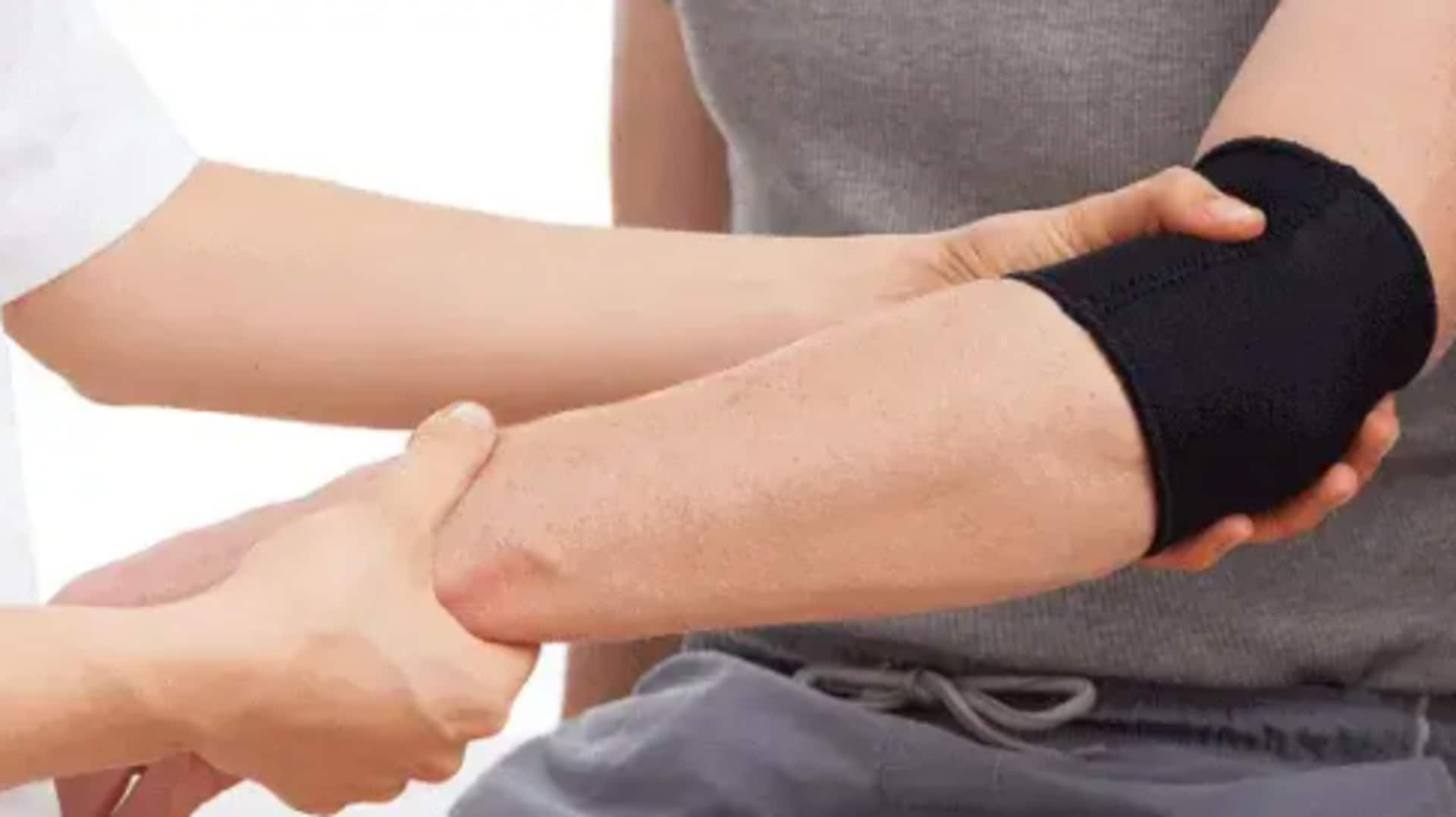
Treating tennis elbow with ice massage and exercises
What's the story
Tennis elbow, a prevalent overuse condition, stems from strain or inflammation in the arm, forearm, and hand muscles, causing discomfort and pain around the elbow's exterior. While frequently associated with tennis and racquet sports, it can impact anyone involved in activities with repetitive motions of the arm and wrist. Discover simple yet effective home remedies, including ice massage and targeted exercises, to relieve the nagging discomfort of tennis elbow.
Ice therapy
The power of ice massage
Ice massage is a quick and easy at-home treatment that can help alleviate inflammation and pain caused by tennis elbow. By rubbing ice directly on the affected area for approximately five to seven minutes, you can effectively reduce swelling and numb the nerve endings. This, in turn, minimizes the perception of pain. Ideally, this treatment should be done multiple times a day, particularly after activities that worsen elbow pain.
Stretching
Stretching exercises for flexibility
To improve flexibility and strength, incorporate specific stretches into your routine. Stand or sit and extend the arm with tennis elbow straight out in front of you with your palm facing down. Use your opposite hand to gently pull the fingers of your extended hand back towards you. You should feel a stretch in your forearm. Hold this position for 15 to 30 seconds. Repeat three times.
Strengthening
Strengthening exercises for recovery
Strength exercises are crucial for tennis elbow recovery as they help rebuild muscle tissue and prevent future injuries. Start with a lightweight dumbbell (one or two pounds). Slowly bend your wrist upwards with palms facing up, then lower it down. Perform three sets of 10 repetitions daily. As you gain strength, progressively increase the weight of the dumbbell to further challenge the muscles.
Rest
Importance of rest and recovery
While exercises and ice massage help in managing tennis elbow, rest is also crucial. You need to allow your muscles time to heal by avoiding activities that strain or cause pain in the affected area. If particular motions or sports worsen your symptoms, refraining from these activities will facilitate faster recovery.
Professional advice
Consultation with healthcare professionals
If symptoms persist despite home treatments or if you're experiencing significant pain that interferes with your daily activities, you should consult a healthcare professional. They can provide personalized advice based on your individual health condition and may recommend additional treatments such as physical therapy or braces for more severe cases.